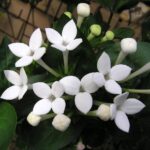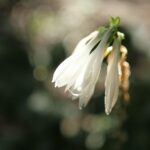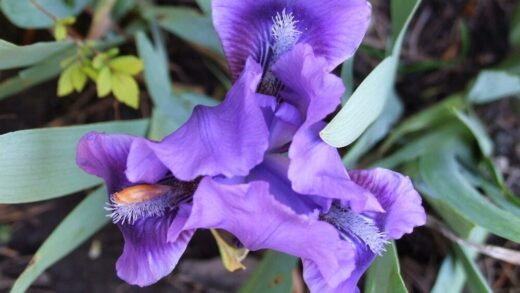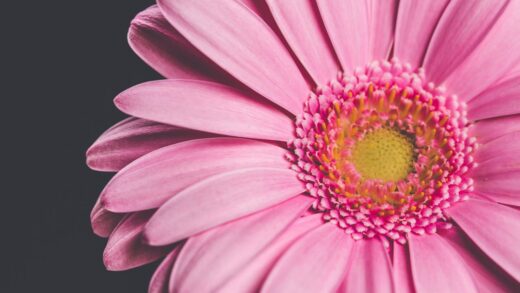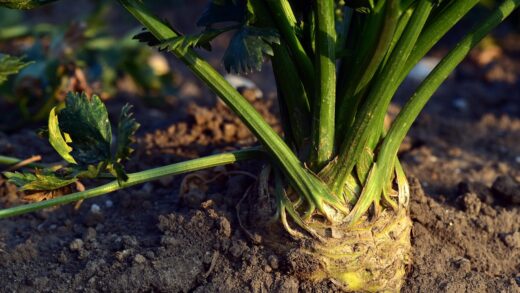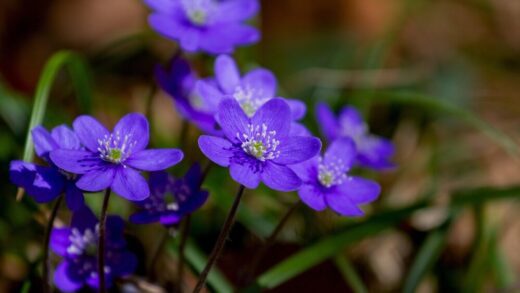The water requirements of biting stonecrop are fundamentally shaped by its succulent nature and its evolutionary adaptation to arid, rocky environments. This plant is a master of water conservation, storing moisture in its fleshy leaves and stems, which allows it to thrive in dry conditions and withstand periods of drought with remarkable resilience. Understanding this inherent drought tolerance is the absolute key to its proper irrigation; in fact, the most common pitfall in its cultivation is providing too much water. For established plants, a hands-off approach is almost always the best strategy, as overwatering poses a far greater threat to its health than underwatering.
A deep-seated misconception among many gardeners is that all plants benefit from regular, consistent watering. However, for xerophytic plants like biting stonecrop, this practice can be lethal. Its root system is designed for a cycle of hydration followed by a thorough drying-out period and is extremely susceptible to the fungal pathogens that flourish in consistently damp or waterlogged soil. Therefore, the primary goal of any irrigation plan for this succulent should be to supplement natural rainfall only when absolutely necessary, rather than adhering to a fixed schedule.
The plant’s life stage plays a significant role in determining its immediate water needs. Newly transplanted stonecrop requires a bit more attention to moisture levels to encourage the development of a strong and expansive root system. During this initial establishment phase, the soil should be kept lightly moist. In contrast, a fully established plant, with its roots well-integrated into the soil, can often sustain itself entirely on ambient precipitation in many climates, requiring supplemental water only during exceptional and prolonged heatwaves or droughts.
Ultimately, the best guide for when to water is the plant itself and the condition of the soil. Learning to observe the subtle cues of the foliage and to assess soil moisture by touch will lead to far greater success than following a rigid calendar. This responsive approach to watering ensures that the plant receives moisture when it truly needs it, promoting robust health, vibrant growth, and a prolific display of its signature star-shaped yellow flowers, all while avoiding the fatal consequences of excessive kindness.
Understanding the drought-tolerant nature
The exceptional drought tolerance of biting stonecrop is its most defining characteristic from a horticultural perspective. This resilience is not accidental but is the result of a suite of physiological adaptations designed to maximize water uptake and minimize moisture loss. The most obvious of these are its succulent leaves. These small, thick, bead-like leaves act as tiny reservoirs, storing water that the plant can draw upon during dry spells. This stored water allows the plant to maintain its metabolic functions even when external water sources are scarce.
Furthermore, biting stonecrop often utilizes Crassulacean Acid Metabolism, or CAM photosynthesis. Unlike most plants, which open their stomata (leaf pores) during the day to take in carbon dioxide, CAM plants open their stomata at night when temperatures are cooler and humidity is higher. This minimizes water loss through transpiration, a crucial survival strategy in arid climates. The carbon dioxide taken in at night is stored and then used for photosynthesis during the day when the stomata are closed, making for an incredibly water-efficient system.
The plant’s root system is also perfectly adapted to its preferred environment. It features a shallow, fibrous network of roots that spreads widely just beneath the soil surface. This structure allows the plant to quickly absorb any available moisture from light rain or dew before it evaporates or percolates deeper into the soil. This efficient water-gathering system, combined with its internal storage capacity, makes biting stonecrop an incredibly tough and self-reliant ground cover for challenging, dry locations in the garden.
Given these remarkable adaptations, it becomes clear why overwatering is so detrimental. The plant’s entire system is calibrated for dryness, not for constant moisture. When the soil remains saturated, the roots are deprived of oxygen and begin to decay, creating an entry point for fungal diseases. The plant has no natural defense against these conditions, as they are entirely opposite to the environment it evolved to inhabit. Therefore, respecting its xerophytic nature by providing excellent drainage and watering only sparingly is the most fundamental principle of its care.
Watering newly planted stonecrop
While established biting stonecrop is famously drought-tolerant, newly planted specimens require a transitional period of more careful water management to ensure they develop a healthy root system. The primary goal during this establishment phase, which typically lasts for the first few weeks to a couple of months, is to provide enough moisture to prevent stress and encourage root growth without creating the waterlogged conditions the plant abhors. This is a delicate balance that requires observation rather than a strict schedule.
Immediately after planting, provide a light watering to help settle the soil around the roots and eliminate air pockets. This initial drink helps to initiate contact between the roots and the soil, which is essential for water and nutrient uptake. For the first two to three weeks, monitor the soil moisture regularly. A good method is to check the top 2-3 centimeters of soil with your finger. If it feels completely dry, it is time to provide a small amount of water.
The key during this period is to water lightly but consistently enough to keep the soil from becoming bone dry for an extended time. Avoid deep, heavy soakings, as the new plant’s root system is not yet extensive enough to absorb a large volume of water, and excess moisture will simply sit in the soil, increasing the risk of rot. A gentle spray from a watering can or hose is often sufficient to moisten the root zone without saturating the entire bed.
You will know the plant is beginning to establish itself when you see signs of new growth, such as fresh leaves or spreading stems. As the plant becomes more robust and begins to actively grow, you can gradually reduce the frequency of watering. This weaning process encourages the roots to grow deeper and further out into the soil in search of moisture, which is crucial for developing the long-term drought tolerance for which the species is known.
Irrigation practices for established plants
Once biting stonecrop has successfully navigated its first growing season and is fully established, its need for supplemental irrigation drops dramatically. In most temperate climates, mature plants can thrive with only the moisture provided by natural rainfall. Their well-developed root systems and water-storing leaves equip them to handle the typical dry spells of summer without any intervention from the gardener. Forgetting to water this plant is rarely a problem; remembering to water it too often is.
The need for supplemental watering for established plants is dictated almost entirely by extreme weather conditions. The only time you should consider irrigating a mature patch of biting stonecrop is during a prolonged and severe drought, particularly if it is combined with exceptionally high temperatures. Even in these circumstances, the plant is surprisingly resilient and can often survive, although its appearance may suffer temporarily. Watering during such periods can help it maintain its vigor and appearance.
When you do determine that watering is necessary, the best practice is to water deeply but very infrequently. This approach mimics the natural pattern of rainfall in many arid regions—a heavy downpour followed by a long dry period. A deep soaking encourages the roots to grow deeper into the soil profile, which further enhances the plant’s drought resistance. After a thorough watering, allow the soil to dry out completely, and do not water again until the plant shows signs of needing it or another extended dry period occurs.
Always water the soil at the base of the plants rather than spraying the foliage from overhead. Wetting the dense mat of leaves can trap moisture and humidity within the plant’s crown, creating an ideal environment for fungal diseases to develop. Watering early in the morning is also advisable, as this allows any moisture that does get on the leaves to evaporate quickly as the sun rises, minimizing the risk of disease.
Recognizing signs of overwatering and underwatering
Being able to interpret the visual signals of your biting stonecrop is crucial for effective moisture management. The plant provides clear indicators of both overwatering and underwatering, allowing you to adjust your practices accordingly. Overwatering is the more dangerous of the two, and its symptoms are often a sign that significant root damage has already occurred. The most common signs include yellowing leaves, a mushy or soft texture in the stems and foliage, and a general lack of vigor. The plant may appear swollen and translucent as its cells become oversaturated.
In advanced cases of overwatering, the base of the plant may turn brown or black as crown rot sets in, and the stems may easily pull away from the root system. A foul, musty smell from the soil is another tell-tale sign that anaerobic conditions have developed and the roots are decaying. If you observe these symptoms, you must cease all watering immediately and assess the drainage of your soil. It may be necessary to lift the plant, trim away rotted parts, and replant it in a drier, grittier medium.
Signs of underwatering, on the other hand, are much less alarming and are easily reversible. As the plant begins to deplete the water stored in its leaves, the foliage will start to look slightly shriveled, puckered, or wrinkled. The vibrant green color may dull, and the leaves will feel soft and less firm to the touch. The entire plant may appear somewhat deflated or limp. These are simply signs that the plant is entering a state of drought-induced dormancy to conserve resources.
When you see these signs of dehydration, it is an indication that the plant would benefit from a good drink. A single, deep watering is usually all that is needed to reverse the symptoms. Within a day or two of receiving moisture, the leaves will plump back up, the color will return, and the plant will look rejuvenated. The ability to recover so quickly from a dehydrated state is a testament to its incredible resilience and adaptation to dry conditions.

